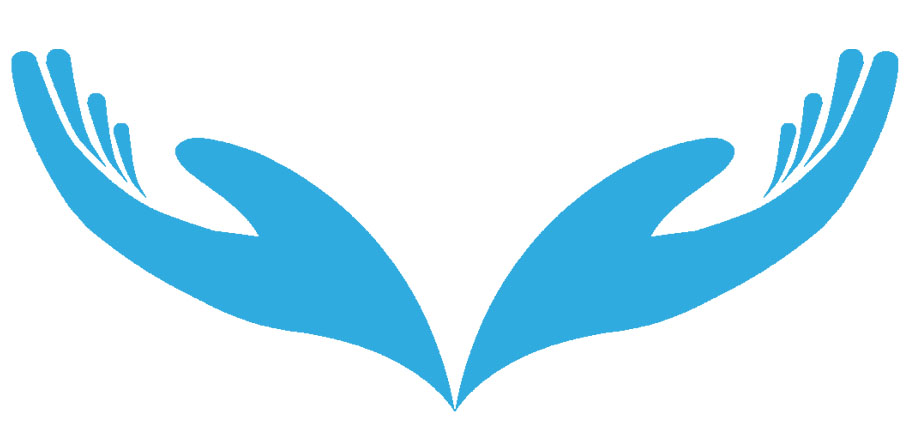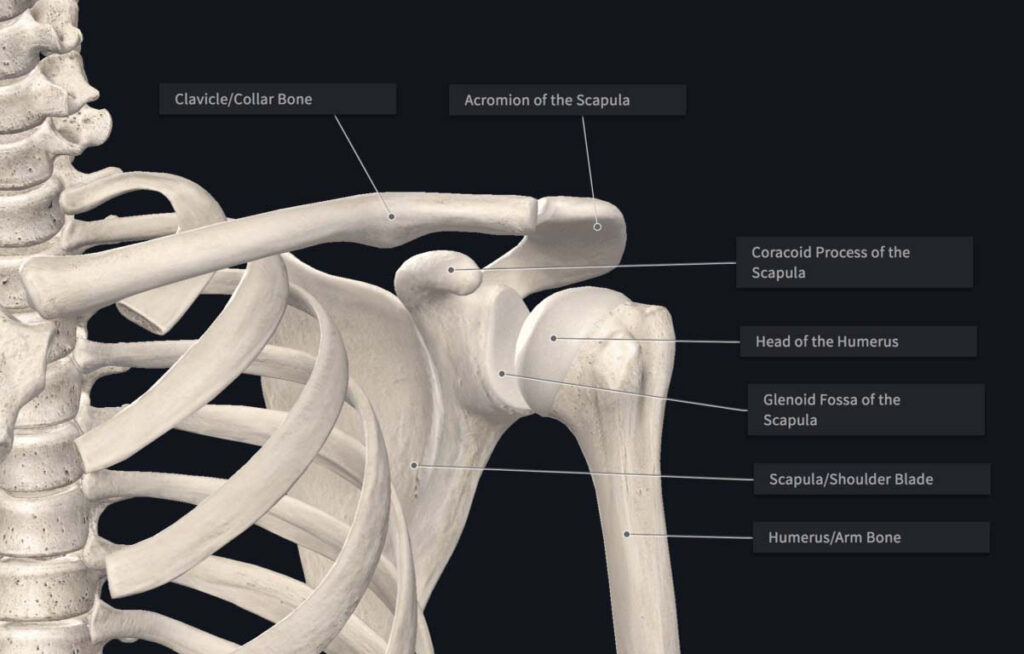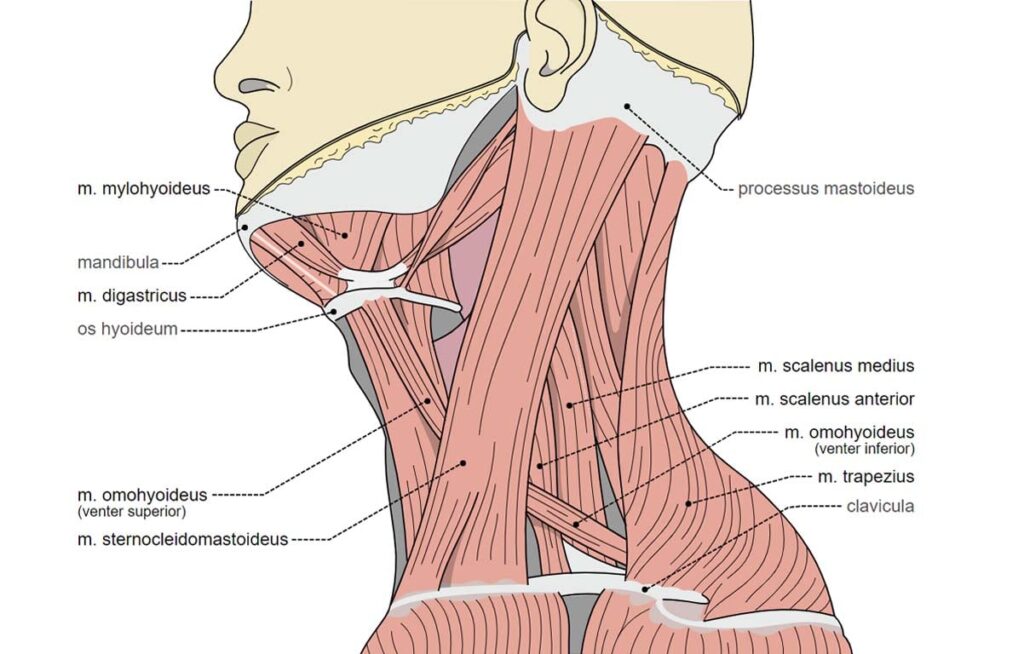
Summary: The article summarizes the symptoms and causes of shoulder and neck pain on left side, while also offering suggestions for home remedies, exercises, prevention tips, and professional treatments.
Pain in the left side of the neck and shoulder is common and crippling. It greatly affects people’s daily lives and well-being. It often stems from poor posture, which could result in muscle strain, injuries, or medical conditions. Also, shoulder and neck pain lasts a long time. It greatly affects mental well-being, causing stress, anxiety, and even depression. The constant discomfort can disrupt sleep. This makes the issue worse and starts a cycle of pain and sleep loss.
Left-sided shoulder and neck pain has a big impact on daily work routines. It goes beyond physical discomfort. It can impede routine activities and cut productivity. Simple tasks can become hard and painful. For example, reaching for objects or typing on a keyboard. Even turning one’s head can, too. This can lead to frustration and a reduced sense of accomplishment.
Shoulder and Neck Anatomy
Understanding the Structure of Shoulder & Neck
The shoulder and neck are complex. They play vital roles in supporting movement and in helping with daily activities. Understanding their structures is crucial. It helps us grasp the sources of pain in these areas.
The shoulder has several key parts. It includes bones, muscles, tendons, ligaments, and nerves. The main shoulder bones are the upper arm bone, called the humerus. Also, there are the shoulder blade, called the scapula, and the collarbone, called the clavicle. The shoulder joint is a ball-and-socket joint. It’s formed by the humerus joining with the scapula. Surrounding this joint are important soft tissues, such as the rotator cuff muscles and their associated tendons. The rotator cuff has four muscles: the supraspinatus, infraspinatus, teres minor, and subscapularis. They stabilize the shoulder joint and help with arm movements.
SPECIAL OFFER 50% OFF
Initial consult £80
X Ray’s if required £120
Special Offer 50% Off On Above Prices

Clunk: Shoulder Instability Climbing (Image Source: https://lafabriqueverticale.com/)
In addition to the rotator cuff, other muscles in the shoulder region play significant roles in movement and stability. These include the deltoid muscle. It covers the shoulder joint and helps lift the arm. There are also the muscles of the shoulder girdle, like the trapezius, serratus anterior, and rhomboids. They control the movement of the scapula.
Moving to the neck, it consists of several vertebrae, including the cervical vertebrae, which form the upper part of the spinal column. Between these vertebrae are intervertebral discs, which act as cushions and allow for flexibility in the neck. Various muscles, tendons, ligaments, and nerves surround the vertebrae. They provide support and enable movement.
Key muscles in the neck include the sternocleidomastoid. It runs from the mastoid process behind the ear to the sternum and clavicle. It allows for rotation and flexion of the neck. Also, the trapezius muscle starts at the base of the skull. It extends down to the thoracic spine. It helps with movements like shrugging the shoulders and tilting the head.

Spasmodic torticollis (Image Source: https://en.wikipedia.org/)
Ligaments in the shoulder and neck regions serve to stabilize the joints and prevent excessive movement. Nerves, like the brachial plexus in the shoulder and the cervical nerves in the neck, drive the muscles and give feeling to these areas.
The shoulder and neck are intricate. They have a network of connected structures. They support mobility and function. Disruption or dysfunction in any of these parts can cause pain, stiffness, and limited motion. This highlights the need to keep them healthy and working well.
Symptoms of Shoulder and Neck Pain on Left Side
- Dull or sharp pain: People with left-sided shoulder and neck pain describe it as dull or sharp. Dull pain is often achy and lasts a long time. Sharp pain is sudden and intense. It is often triggered by certain movements or positions.
- Stiffness: is a problem in the left shoulder and neck. It can make moving hard. The muscles and joints may feel tight. They may resist movement. This can cause a feeling of stiffness or rigidity.
- Limited range of motion: The pain impairs left-side motion. It makes it hard to move those areas fully. This limit may show as trouble raising the arm or turning the head. It can also make everyday tasks hard that need upper body movement.
- Tingling or numbness: Tingling or numbness are called paresthesia. They may be felt in the left shoulder, neck, and down the arm and into the fingers. This feeling can range from mild tingling to complete numbness. It may mean that a nerve is compressed or irritated.
- Weakness: Pain in the left shoulder and neck can cause muscle weakness there. Weakness may show as trouble lifting objects. Grip strength is reduced. Or, there is a feeling of shoulder joint instability. This weakness can affect daily activities. It may get worse with prolonged pain or inactivity.

Home Remedies For Shoulder and Neck Pain
1. Rest and Ice
Rest: Avoid activities that exacerbate the pain.
Ice: Apply an ice pack to the affected area for 15-20 minutes every few hours during the first 48 hours.
2. Heat Therapy: After the first 48 hours, use a heating pad or warm compress. They will relax and loosen tissues and boost blood flow to the area.
3. Over-the-Counter Pain Relief: NSAIDs, like ibuprofen or naproxen, can reduce inflammation. They also relieve pain.
4. Gentle Stretching: Perform gentle neck and shoulder stretches to improve flexibility and reduce tension.
Examples include:
Neck Tilt: Tilt your head towards one shoulder, hold for 15-30 seconds, and repeat on the other side.
Shoulder Roll: Roll your shoulders forward and backward in a circular motion.
Exercises
1. Neck Stretches
Side-to-Side Stretch: Gently move your head from side to side.
Neck Rotation: Slowly turn your head to look over your shoulder.
2. Shoulder Exercises
Shoulder Blade Squeeze: Sit or stand up straight, squeeze your shoulder blades together, hold for a few seconds, and release.
Arm Across Chest: Bring one arm across your chest, using the other arm to gently press your arm towards your chest.
3. Posture Correction: Practice good posture by keeping your back straight, shoulders back, and head aligned over your shoulders.
When to Seek Professional Help of a Chiropractor for Shoulder and Neck Pain on Left Side
1. Persistent Pain: If the pain persists for more than a few weeks despite home treatment, it’s time to consult a healthcare professional.
2. Severe Pain: Seek medical help right away if the pain is severe. Also, seek help if it comes with other symptoms like numbness or weakness, or if it follows an injury.
3. Limited Mobility: If you have big trouble moving your neck or shoulder, a physical therapist or orthopedic specialist can help.
Professional Treatments
1. Physical Therapy: A physical therapist can give specific exercises and treatments. These can reduce pain and improve function.
2. Chiropractic Care: Chiropractors can perform adjustments to alleviate pain and improve alignment.
3. Massage Therapy: Massage can help reduce muscle tension and improve blood flow to the affected area.
4. Medical Interventions: In some cases, your doctor may recommend injections, pills, or surgery. This is if simple treatments fail to help.
Prevention Tips
1. Ergonomic Adjustments: Ensure your workspace is ergonomically designed to reduce strain on your neck and shoulders.
2. Regular Exercise: Engage in regular physical activity to strengthen your muscles and improve flexibility.
3. Stress Management: Practice stress-reducing techniques such as yoga, meditation, or deep breathing exercises.
4. Proper Sleep Position: Use a supportive pillow and sleep on your back or side to maintain proper neck alignment.
Conclusion
Pain in the left shoulder and neck can be managed with home remedies, exercises, and pro treatments. By understanding the causes and following these guidelines, you can reduce pain. You can also improve mobility and enhance your life. Always ask a healthcare professional. They can make a personalized treatment plan for you. It will be tailored to your needs.
FAQs
What causes shoulder and neck pain?
Common causes include poor posture, muscle strain, arthritis, pinched nerves, or injuries from accidents.
When should I see a doctor for shoulder and neck pain?
Seek medical help if the pain is severe, persistent, accompanied by numbness, weakness, or follows an injury.
Can poor posture cause shoulder and neck pain?
Yes, slouching or hunching over devices can strain muscles and lead to shoulder and neck pain.
What treatments are available for shoulder and neck pain?
Treatments include physiotherapy, chiropractic care, massage, pain relief medications, and in severe cases, surgery.
Can a chiropractor help with shoulder and neck pain?
Yes, chiropractors use spinal adjustments, soft tissue therapy, and exercise recommendations to alleviate pain.
How can I relieve shoulder and neck pain at home?
Apply heat or cold packs, practice good posture, do gentle stretches, and avoid activities that strain the area.
Is shoulder and neck pain linked to stress?
Yes, stress can cause muscle tension, leading to pain in the shoulder and neck area.
Can sleeping positions cause shoulder and neck pain?
Yes, sleeping on your stomach or using an unsuitable pillow can strain your neck and shoulders.
What exercises can help with shoulder and neck pain?
Exercises like neck tilts, shoulder rolls, and stretching can improve flexibility and relieve tension.
Does shoulder and neck pain go away on its own?
Mild pain often resolves with rest and self-care, but chronic or worsening pain may require professional treatment.

